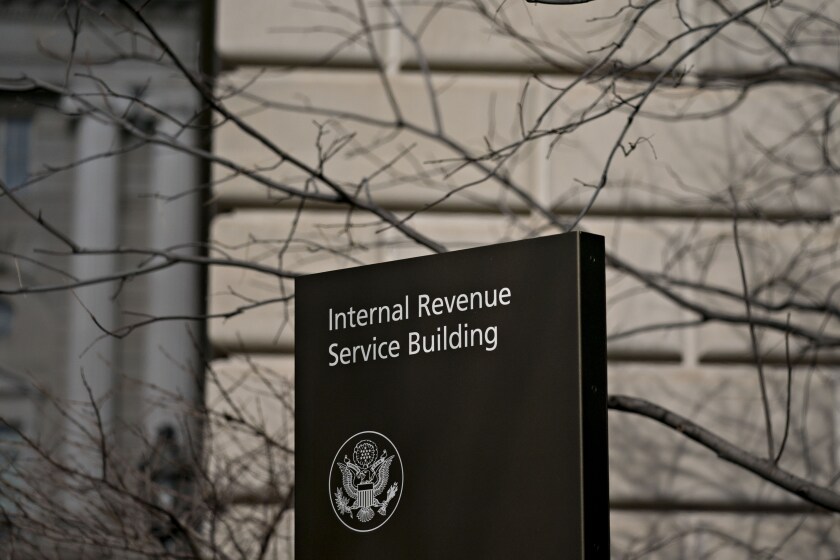The Internal Revenue Service is giving taxpayers until the end of the year before it stops its temporary procedures for faxing in Forms 1045 and 1139 for claiming tentative tax refunds, instead of mailing them, which it has allowed as part of its response to the COVID-19 pandemic.
In April, the IRS began allowing taxpayers to file both forms by fax while many IRS employees worked remotely and were unable to process the mail.
Gemma Ros is the chief technology officer at TheZebra.com, the company simplifying the insurance shopping experience. In this role, Gemma leads the engineering, DevOps, and data teams, driving innovation and operational excellence. She is an excellent source on technology innovation in the insurtech space, what it means to be an impactful and effective leader, her journey to the CTO role and more.
Gemma is a senior technology executive and business strategist with more than 20 years of experience in financial services and product development. Gemma began her career as a developer at a bulge bracket investment bank, where she gained deep expertise in building robust, scalable, and low-latency trading and risk management systems in dynamic environments. After eight years on Wall Street, she co-founded a technology startup, then expanded her expertise to insurtech and private lending before joining TheZebra.com in 2022.
Throughout her career, Gemma has been recognized for delivering high-impact technology solutions, building and scaling high-performing teams, and attracting and retaining top engineering talent.
She holds a master's degree in computer science from the University of Pennsylvania and a bachelor's degree from Dartmouth College. Outside of her professional experiences, Gemma enjoys spending time with her kids, reading, and adding to her ever-expanding Lego collection.
Brad LaPorte is chief marketing officer at Morphisec and a former Gartner analyst. He is a seasoned cybersecurity expert and former military officer specializing in cybersecurity and military intelligence for the U.S. military and allied forces.

Anurag Shah heads Newgen's Products & Solutions Division in the Americas, including the Caribbean, South, and Central American regions. He also leads GSI relations as well as consulting and pre-sales in the Americas. He has been with Newgen for over 22 years. In his previous role, he led and managed delivery and professional services for enterprise customers.
An individual, estate or trust can file Form 1045, Application for Tentative Refund, to apply for a quick tax refund resulting from the carryback of a net operating loss, the carryback of an unused general business credit, the carryback of a net section 1256 contracts loss, or an overpayment of tax due to a claim of right adjustment under section 1341(b)(1) of the Tax Code.

Corporations (other than S corps) can file Form 1139, Corporation Application for Tentative Refund, to apply for a quick refund of taxes from the carryback of a net operating loss (or a loss from operations of a life insurance company), the carryback of a net capital loss, the carryback of an unused general business credit, or an overpayment of tax from a claim of right adjustment under section 1341(b)(1).
The CARES Act, which Congress passed in March in response to the coronavirus crisis, included some provisions allowing companies to carryback their net operating losses for five years and file refund claims, giving them a quick capital infusion in the midst of the pandemic. Taxpayers with a net operating loss arising in a tax year starting in 2018, 2019 or 2020 can carry that loss back to each of the five preceding years unless the taxpayer elects to waive or reduce the carryback. The law also allows a carryback for a two-year period of NOLs for a tax year that began in 2017 and ended during 2018.
Another section of the CARES Act modifies the credit for prior-year minimum tax liability of corporations, including to accelerate the recovery of remaining minimum tax credits of a corporation for its 2019 taxable year from its 2021 taxable year and to allow a corporation to elect instead to recover 100 percent of any of its remaining minimum tax credits in its 2018 taxable year. In April, the IRS began allowing taxpayers on a temporary basis to fax in Forms 1045 and 1139 to expedite the tax refund process.
However, on Wednesday, the IRS added an entry to its Frequently Asked Questions page describing the temporary procedures to say the procedure will end on Dec. 31, 2020. After midnight on New Year’s Eve, the fax numbers will no longer be operational. The IRS noted that the end of the faxing process is independent of any filing due dates. For example, the last day to file Form 1139 electing to take the 100 percent refundable minimum tax credit in 2018, is Dec. 30, 2020.
“Additionally, if you file one application for a tentative refund and claim both the NOL carryback and the minimum tax credit at the same time, you must file the application by the earliest applicable deadline,” the IRS noted.


